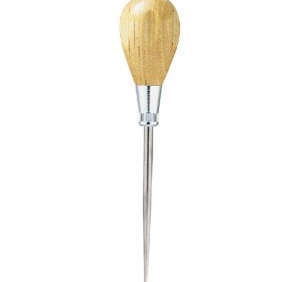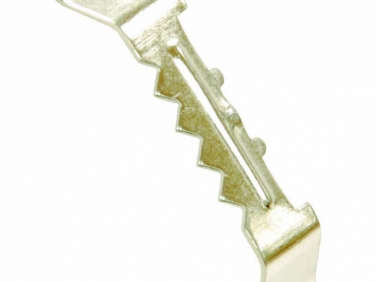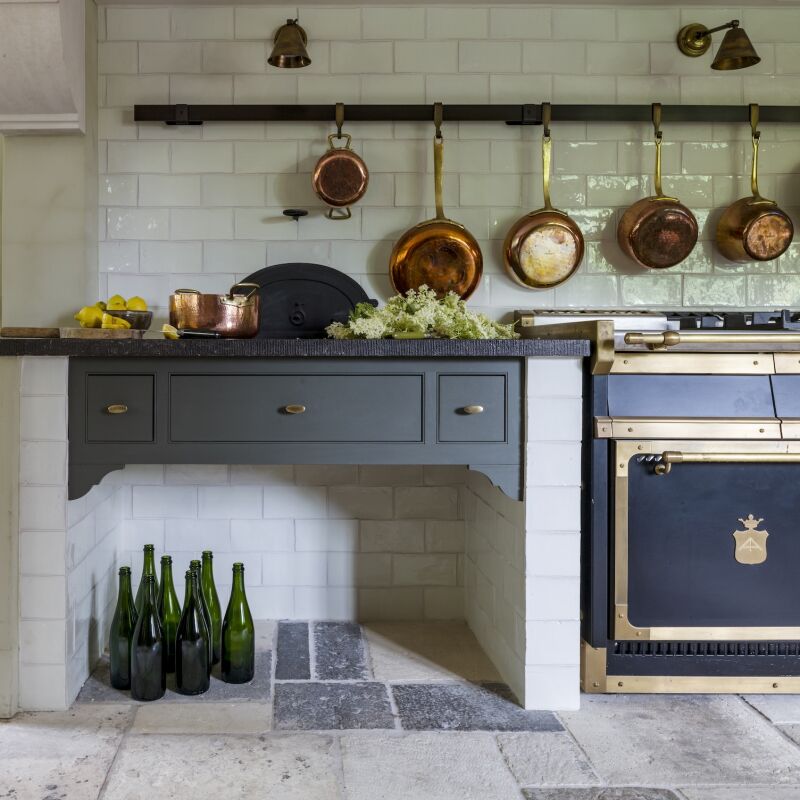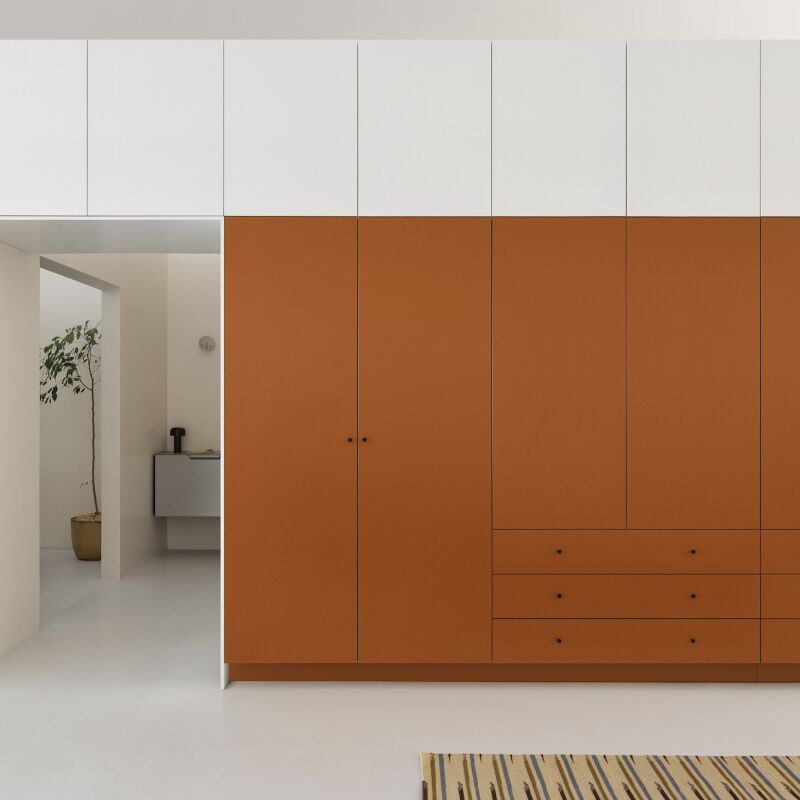I like to see how other people store their kitchen knives. It’s a detail I often zero in on when visiting a new kitchen or looking at photos of kitchens. Are the knives tucked away in a stealth in-drawer block? Or are they out in the open in a traditional countertop block, or suspended from a magnetic strip?
A while back, I spotted a knife storage solution that, after hours of online searching, I realized is entirely bespoke: a leather knife rack mounted to the side of a kitchen island. I had to have one, so I made my own. With a pliable piece of leather, it’s a pretty simple thing to create, and you can tailor each loop in the rack to fit your own needs—no advanced knife skills necessary.
Photography by Alexa Hotz for Remodelista.

Materials
- Wood cut to the desired length. I used a 12-by-2-by-1-inch piece of poplar. Choose a soft wood if you plan to use pushpins.
- Leather hide, at least 14 by 7 inches (enough to generously wrap the entire piece of wood)
- A handful of pushpins or nails
- Sandpaper
- Scissors
- A hammer
- An awl; such as the General Tool 818 Scratch Awl; $4.33 from Amazon
Instructions


If your leather is on the thinner side, you can wrap the ends of the wood as you would a gift box, folding it over itself. If your leather is a thicker cut, as mine was, you’ll want to make L-shaped cutouts so that you don’t have unnecessary excess. If you’re using soft wood and leather, you can secure each section with a simple pushpin. If the wood is hard and the leather is thick, you’ll want to puncture your leather with an awl and use a nail to create a hole before applying a pushpin.



Consider customizing your knife rack to your own set of knives and kitchen tools: I created one large loop to hold my kitchen scissors, and smaller, tighter loops for my knives.

The Finished Look

For more DIYs, see our DIY archive, plus:
- DIY: Homemade Dish Soap
- DIY: A Shower Curtain Hoop Made from Plumbing Parts, by Zio & Sons
- The Shingled House DIY: Easy Burlap Shades (for Less Than $20 Each)
N.B.: This post is an update. It originally ran on May 28, 2014, as part of our Modest Modern issue.






Have a Question or Comment About This Post?
Join the conversation